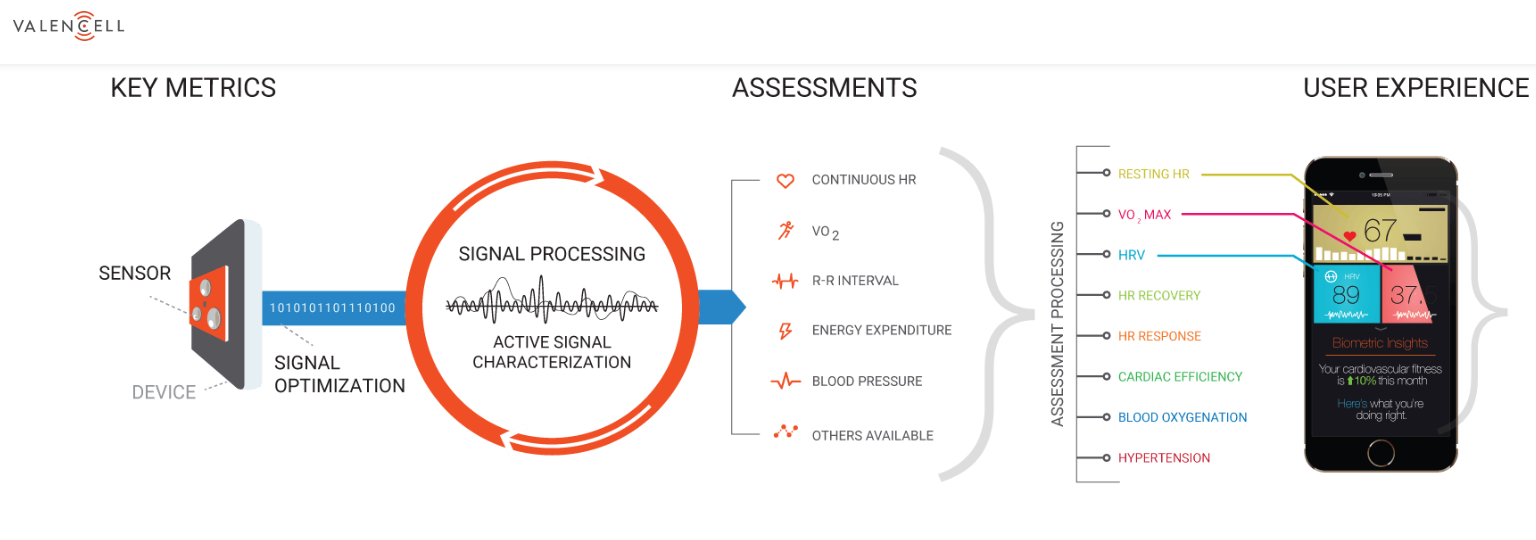-
I’ve mentioned this some time ago as I saw Coros shows blood oxygen parameters in their Vertix I think.
It would be great to have this feature added in S9 watches.From my understanding the Valencell sensor should be capable of measuring this.
https://valencell.com/ppgsensors/ -
More than blood oxygen…

-
-
@Luís-Pinto
so my next Suunto 9² is going to have valencell with blood oxy and pressure
-
@TELE-HO I would be satisfied if hr readings were good…I’m more modest.
-
Voted for this suggestion. If possible I would be happy to see it.
-
@Skdenes it’s not understandable why Valencell does not help Suunto. And that is seen immediately by the firmware on the watch that does not change. Still 7253.
-
@Luís-Pinto
Well it could be related to hardware needs (maybe the algorithm is too resource greedy) or maybe just a license stuff, or maybe Suunto didn’t want to expose data that can be misleading.We’ve discussed this topic several times in various threads.
I would love to access the raw stream from the sensor, just to play with data
-
i would be happy if Valencell could solve the issue of cadence lock when running in current ohr used by S9

-
@vimegar said in blood oxygen parameter with Valencell sensor:
More than blood oxygen…

I’d be interested in seeing how many of those metrics are actually accurate.
-
In the recent survey in Suunto app there has been a question about SpO2. If we want it as a new feature and the reason why we want it. I think it does not make sense to implement feature if it is not accurate and it eats a lot of battery. However features sell products, look at Garmin everybody is talking about SpO2 feature, though it is not accurate and most reviewers suggest to turn it off to save battery. If Suunto can achieve better OHR readings for most users and better battery economy with new sensor that would be great. Maybe add additional feature for health tracking accurate enough.
-
I think so it is quiet difficult to guess how much battery it will eat. It is a same process as a all-day HR monitor so can have same consumption or might be calculated from the available data.
-
@dulko79 said in blood oxygen parameter with Valencell sensor:
However features sell products,
and useless or unprecise features generate items return and negative feedbacks and complaints … as we’ve seen here with OHR

… if you care you maybe do things more in Suunto’s way, otherwise do Garmin way

-
@sartoric management does not see negative feedback and complaints just products sold.
 Then engineers aka magicians save the day so the show can go on.
Then engineers aka magicians save the day so the show can go on. -
I doubt this is software only, this is a hardware feature first. I used spo2 on Garmin, my girlfriend has a fitbit that also has it, and we have a finger spo2 sensor too. Still, haven’t found a use case except few reads for fun if we get sick.
-
@isazi shouldn’t it help to judge ones adaptability to height changes? Could be helpful in the mountains.
-
@Дима-Мельниченко so far, they do not work well during activities. You need to sit and have your arm on a table for better results. So they could be useful for when you stay at a hut in the mountains to check at night. However, they are probably not tested at altitude, in fact Garmin’s implementation does not provide “acclimatization” metrics above 4000 meters, where it could actually be useful for real.
But, I hope the new sensors will work better and use less battery.
-
Just a hint: As I have seen or read other posts, mostly spo2 is just to see weather you are getting sick (I am that type with a bit astma and currently is winter time with Snow, so I am expecting some problems
 ) and also might help to detect sleeping apnea (you can realize if you are snoring) if this all day/sleep time monitoring is applied.
) and also might help to detect sleeping apnea (you can realize if you are snoring) if this all day/sleep time monitoring is applied.